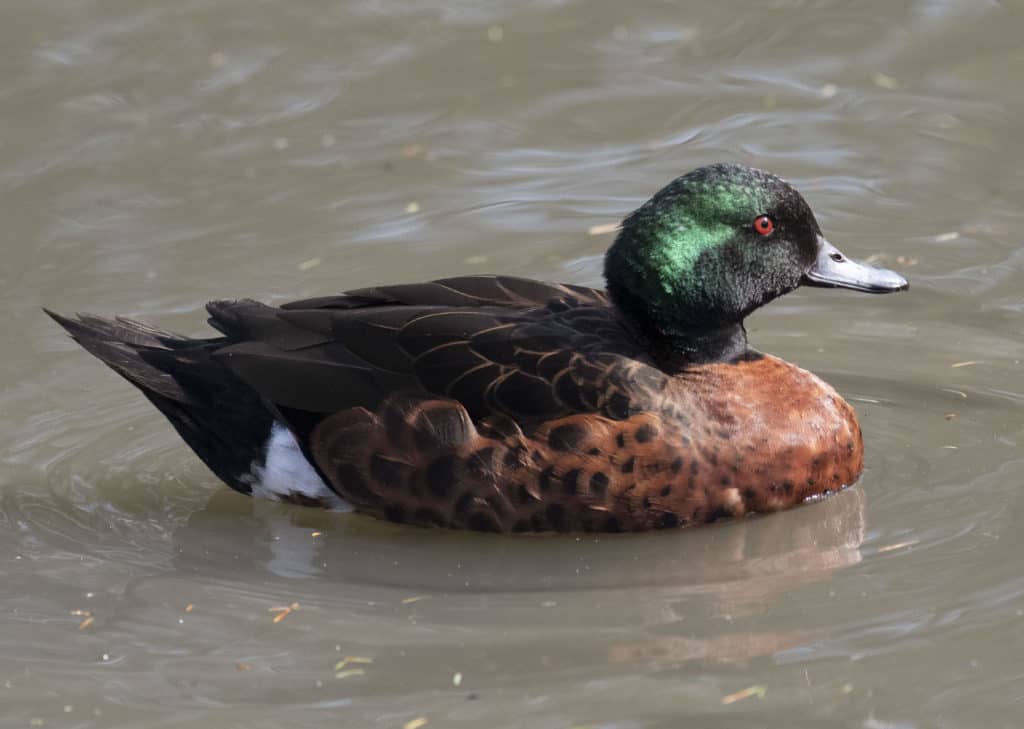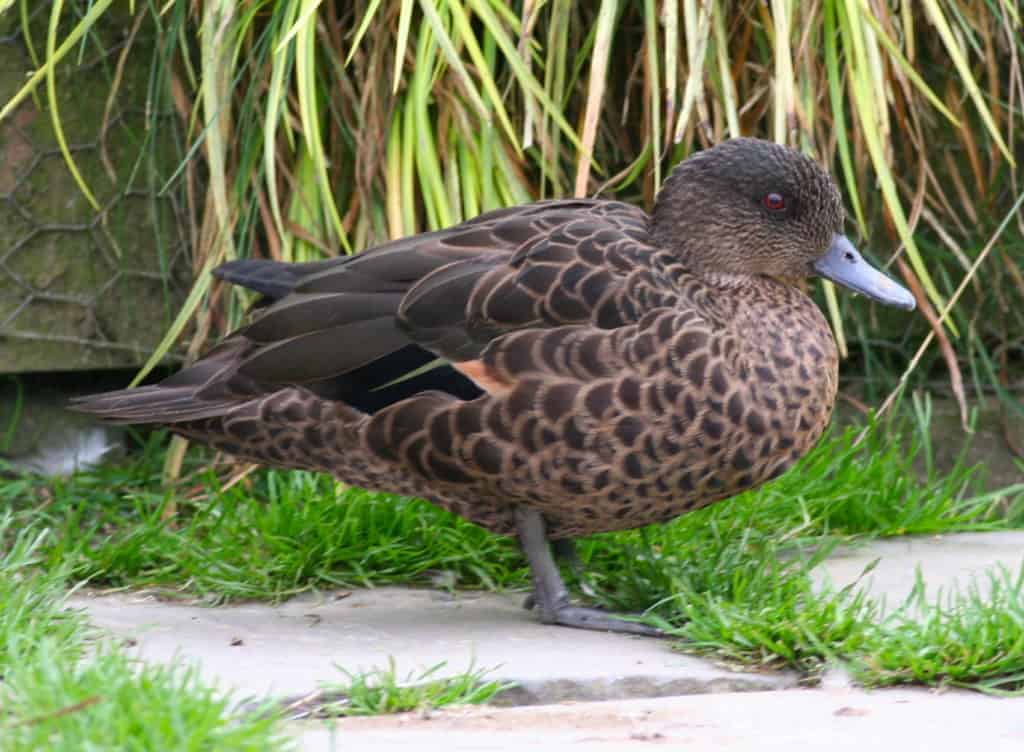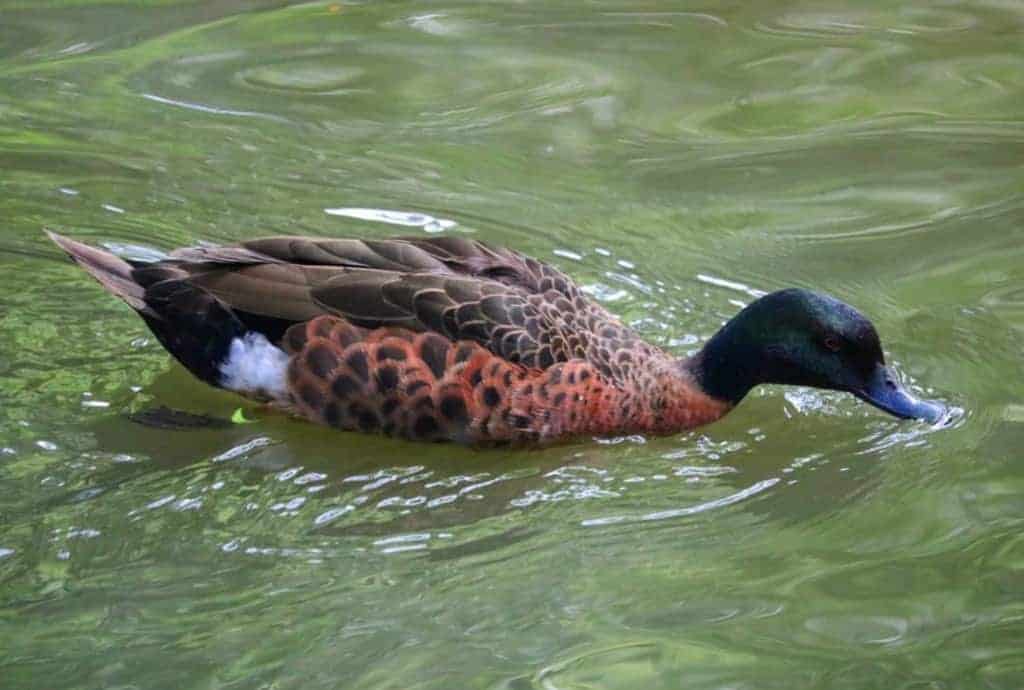Chestnut Teal


Anas castanea
The handsome little Chestnut Teal is a native of southern Australia, found in both the west and in the east, including Tasmania. Sometimes called Chestnut-breasted Teal, the drake’s appearance is unlike that of any other teal, apart from the rare and endangered Brown Teal of New Zealand. In full plumage the drake has a distinctive dark green head, contrasting with a chestnut body. Unlike most southern hemisphere ducks, the drake does have a duller eclipse plumage. The duck has dark-brown feathering, and is very similar in appearance to the Grey Teal, with which this species will hybridise in captivity.

Chestnut Teal have long been popular in collections as they are attractive, unaggressive, easy to keep and mix well with other ducks. They are also winter hardy. Egg laying may commence as early as March, and up to three clutches will be laid if eggs are removed before incubation starts. The ducklings are easy to rear.
7–10 creamy eggs can be laid in tree hollows, on the ground in tall grass or bushes or between rocks, preferably near water. They will happily use nest-boxes. The duck incubates for 23 to 28 days and often the drake will stick around and help tend the brood.